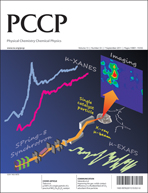A new approach to local hardness
Abstract
The applicability of the local hardness as defined by the derivative of the chemical potential with respect to the electron density is undermined by an essential ambiguity arising from this definition. Further, the local quantity defined in this way does not integrate to the (global) hardness—in contrast with the local softness, which integrates to the softness. It has also been shown recently that with the conventional formulae, the largest values of local hardness do not necessarily correspond to the hardest regions of a molecule. Here, in an attempt to fix these drawbacks, we propose a new approach to define and evaluate the local hardness. We define a local chemical potential, utilizing the fact that the chemical potential emerges as the additive constant term in the number-conserving functional derivative of the energy density functional. Then, differentiation of this local chemical potential with respect to the number of electrons leads to a local hardness that integrates to the hardness, and possesses a favourable property; namely, within any given electron system, it is in a local inverse relation with the Fukui function, which is known to be a proper


 Please wait while we load your content...
Please wait while we load your content...